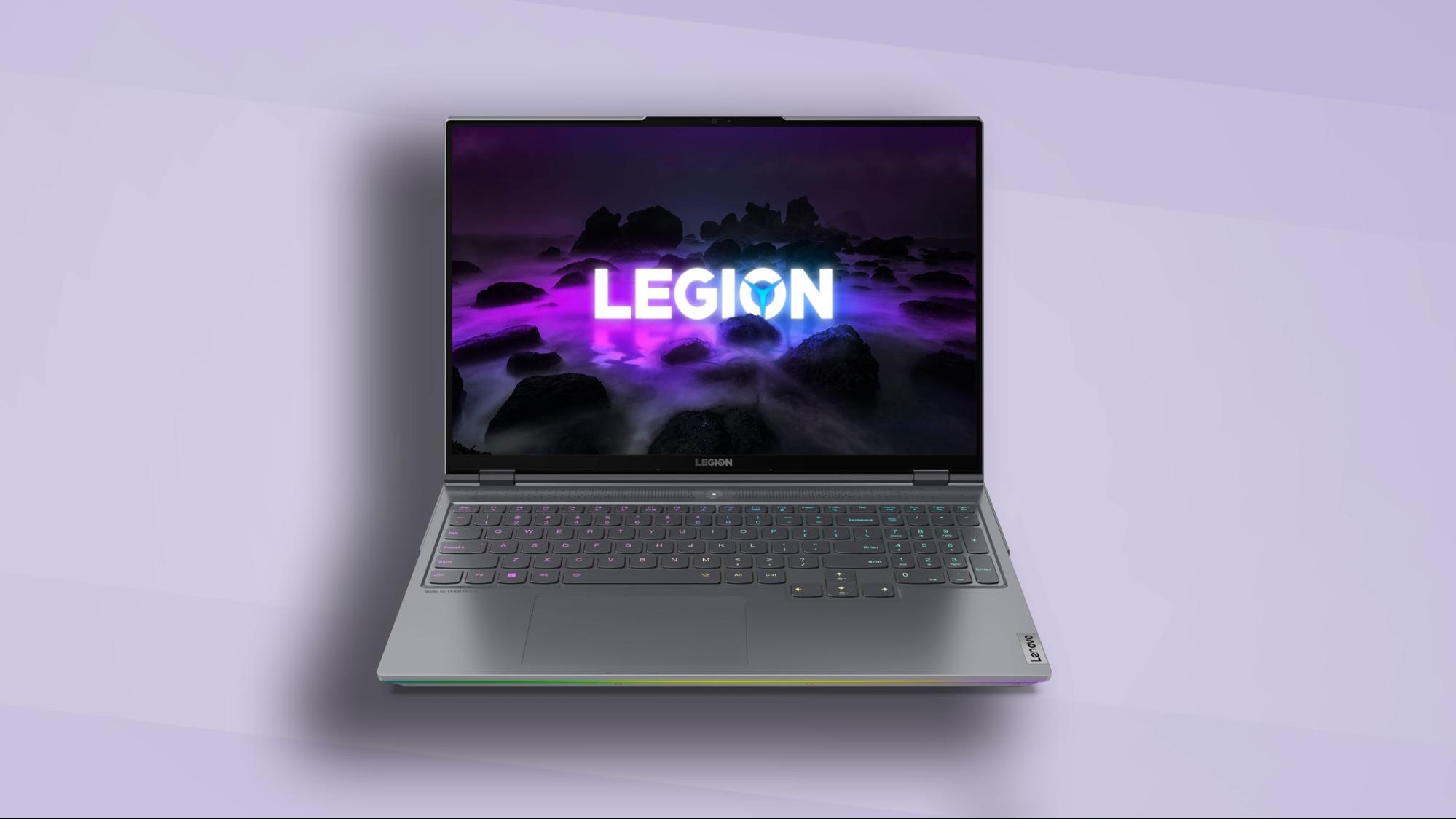Among Lenovo’s wide swath of devices at the all-virtual CES 2021 are a new range of Legion-branded gaming notebooks, which are picking up AMD’s latest Ryzen processors as well as the newest GPUs from Nvidia.
Lenovo Legion Specs
| Lenovo Legion 7 | Lenovo Legion Slim 7 | Lenovo Legion 5 Pro | Lenovo Legion 5 (17-inch) | Lenovo Legion 5 (15-inch) | |
|---|---|---|---|---|---|
| CPU | Up to the latest AMD Ryzen 9 | Next-gen AMD processors | Up to the latest AMD Ryzen 7 | Up to the latest AMD Ryzen 7 | Up to the latest AMD Ryzen 7 |
| GPU | Up to the latest Nvidia GeForce RTX | Up to the latest Nvidia GeForce RTX | Up to the latest Nvidia GeForce RTX | Up to the latest Nvidia GeForce RTX | Up to the latest Nvidia GeForce RTX |
| RAM | Up to 32GB DDR4 3200MHz | Not disclosed | Up to 16GB DDR4 3200MHz | Up to 16GB DDR4 3200MHz | Up to 32GB DDR4 3200MHz |
| Storage | Up to 2TB M.2 PCIe NVMe SSD | Not disclosed | Up to 2TB M.2 PCIe NVMe SSD | Up to 1TB M.2 NVMe PCIe SSD | Up to 2TB M.2 NVMe PCIe SSD |
| Display | 16-inch, 16:10, IPS QHD (2560 x 1600), G-Sync, HDR400, 165 Hz, Dolby Vision | 15.6-inch, FHD at 165 Hz or 4K at 60 Hz, Dolby Vision | 16-inch, 16:10, IPS QHD (2560 x 1600), G-Sync, HDR400, 165 Hz | 17.3-inch, FHD (1920 x 1080) up to 144 Hz, Dolby Vision | 15.6-inch, FHD (1920 x 1080), up to 165 Hz, Dolby Vision optional |
| Networking | Wi-Fi 6, Killer Wi-Fi, Bluetooth 5.1 | Wi-Fi 6 (Killer Wi-Fi optional) | Wi-Fi 6, Bluetooth 5.1 | Wi-Fi 6, Bluetooth 5.1 | Wi-Fi 6, Bluetooth 5.1 |
| Availability | June 2021 | May 2021 | March 2021 | March 2021 | March 2021 |
| Starting Price | $1,669.99 | Not yet announced | $999.99 | $769.99 | $769.99 |
Lenovo Legion 7
The flagship is the Lenovo Legion 7, which will start at $1,669.99 in June. It will bear up to the latest AMD Ryzen 9, which we suspect will mean mobile versions of Ryzen 5000 parts, though Lenovo hasn’t said. It’s also going up to “the latest Nvidia GeForce RTX,” which may mean RTX 3000-series parts, given recent rumors.
The new Legion 7 will compete with the best gaming laptops with a 16-inch display with a 16:10 aspect ratio, but the chassis will be the same size as the 15-inch version from the previous generation of machines. The screen has a 165 Hz refresh rate, 1440p resolution and G-Sync, plus Dolby Vision support and optional DisplayHDR 400 certification.
Lenovo’s offering the PC in “storm grey” with per-key RGB lighting, as well as RGB on the bottom lip, exhaust vents and logo on the lid. That RGB’s all controlled by Corsair’s iCue software. The laptop’s cooling includes liquid metal thermal compound and a vapor chamber. The 720p webcam will have an “e-shutter” kill switch for privacy on the side of the laptop.
There’s also a smaller version, the Lenovo Legion Slim 7, with a 15.6-inch screen at either 4K resolution and 60 Hz or 1080p at 165 Hz. The magnesium-aluminum laptop is 4.2 pounds, which Lenovo is calling the thinnest and lightest in history.
Like the Legion 7, the Legion Slim 7 has liquid metal. However, the Corsair RGB is optional, and it otherwise comes with a white keyboard backlight. Instead of a camera kill switch, there’s a sliding privacy shutter.
Lenovo Legion 5 Pro
Lenovo is positioning the Legion 5 Pro as the go-to for eSports. It has a far less subtle design, using the old Y-series logo on a white or gray chassis. Like the Legion 7, it comes with a 16-inch, 16:10, IPS QHD (2560 x 1600), G-Sync screen at 165 Hz. It also uses the latest Nvidia GPUs, but will go up to a Ryzen 7 CPU instead of a Ryzen 9.
Lenovo claims this laptop has better rear venting for cooler gaming, as well as a more durable hinge.
The regular Legion 5 maintains less gamer-y stylings in “phantom blue” and choices of 15.6 and 17.3-inch options.
Last but not least, for entry-level gaming, there’s the IdeaPad Gaming 3, which is also AMD-based. It will start at $669.99 in June, but specs weren’t further disclosed.
This lineup is notable in that there’s not a single Intel CPU in sight. Rather than waiting for Tiger Lake-H, Lenovo has gone entirely for AMD’s Ryzen processors for gaming. We’ll have to see through CES 2021 if competitors choose a similar strategy. Either way, we’re looking forward to testing the newest AMD and Nvidia tech together in AMD’s new offerings.
